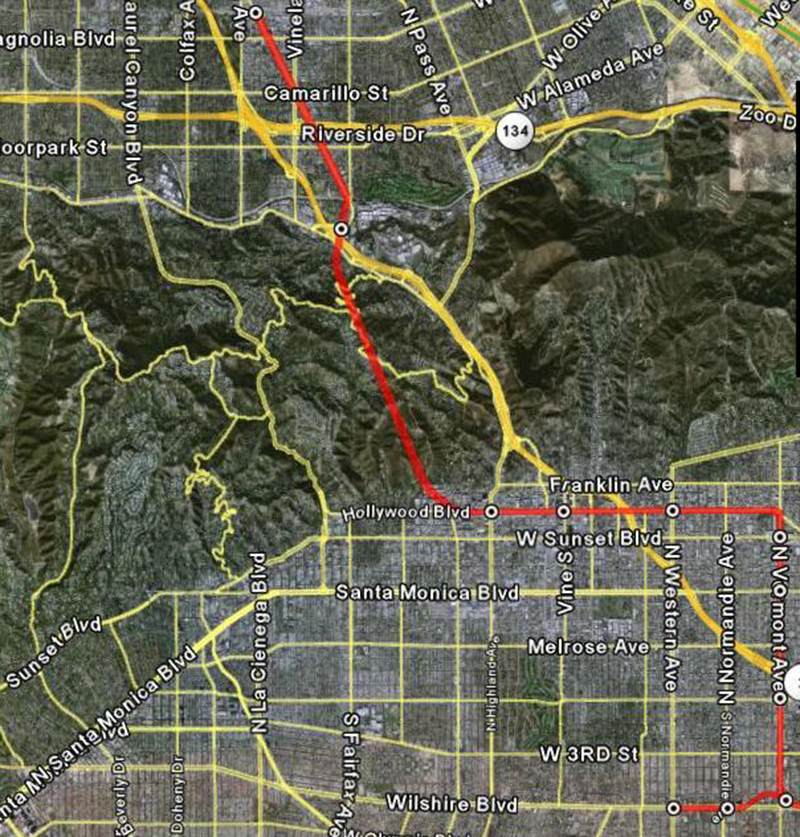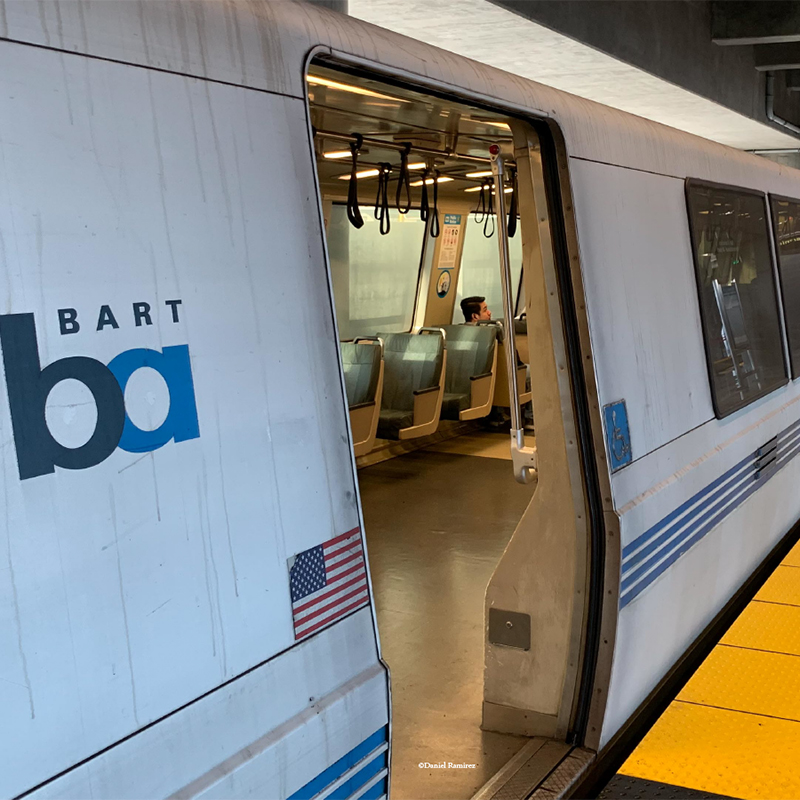Transit bailout will only delay the day of reckoning
By Steven Greenhut | June 29, 2023
It was inevitable that the California Legislature would bail out the state’s ailing public-transportation systems, which are facing dire fiscal crises as federal pandemic aid dries up. Although he had resisted a cash infusion earlier this month, Gov. Gavin Newsom this week agreed to a $5.1-billion Democratic package of operating and construction subsidies to avoid threats of transit service cuts.
Bloomberg reported that, under Newsom’s original budget plan, the agencies would have to choose between using the money to keep their current routes operating and investing in new systems and infrastructure. The extra $2 billion added in the final deal will reduce the need for such “tough” choices. It’s meant to stop a death spiral. As systems cut routes to save money, even fewer people ride the trains and buses, thus leading to more service cuts.
But, in reality, the money – coming at a tough financial time, as the state faces a nearly $32-billion budget deficit – will not spark real change in the way the state’s transit agencies operate, despite promises of new “accountability” and oversight measures. It’s still unclear what those measures entail, although the governor secured some reforms to the California Environmental Quality Act (CEQA) to expedite construction of big infrastructure projects.
Bay Area lawmakers introduced a separate bill to boost bridge tolls to help support transit. Certainly, the money gives agencies time to avoid service cutbacks. But we’ve all seen how public agencies use new revenues. They rarely make fundamental changes in, say, salary and pension structures. They rarely embrace privatization or other cutting-edge technological improvements. They take the cash and continue with business as usual until they run out of money again.
There’s no realistic reason to think that transit systems will identify real cost savers – or that new accountability rules amount to anything other than promises designed to secure support for new funding. Advocates for the bailout argue that cutting transit would have undermined the state’s climate goals – but Californians already are avoiding these systems, so it’s hard to see how extra cash will help reduce our reliance on automobiles.
Transit advocates argue that the current crisis is largely the result of the pandemic. Because of stay-at-home orders and a shift to remote work, “monthly ridership dropped from 100 million (statewide) in February 2019 to about 20 million in June 2020,” The Times of San Diego reported. Those numbers have jumped up to 60 million last year – but now federal subsidies are going away.
Although partially true, this explanation avoids the longer-term picture. The Bay Area Rapid Transit (BART) system had some of the nation’s lowest usage rates for major metropolitan areas before anyone even had heard of COVID-19. Transit systems across the country had lost around 20 percent of their riders between 2014 and 2018. The only major transit system showing growth before the pandemic was Seattle’s. California’s systems’ ridership numbers have fallen more than most.
A report from the Southern California Association of Governments (SCAG), which describes itself as the nation’s largest metropolitan planning organization, in 2018 put the matter in perspective in an extensive truth-telling report:
Since 1990, the SCAG region has added over 100 miles of light and heavy rail in Los Angeles County, and over 530 miles of commuter rail region-wide. These investments, however, have not been matched by increases in transit ridership. Transit ridership in the SCAG region reached its postwar peak in 1985. Through the 1990s and 2000s ridership rose and fell modestly, but never again reached its 1985 level.


Despite heavy investments, Californians are voting with their feet – or, more accurately, with their cars. Instead of focusing on building better transit systems and improving the efficiencies of the current systems, California policy makers have focused on sometimes absurd policies designed to encourage commuters to abandon their cars, such as “road diets” that reduce traffic lanes and replace them with bicycle lanes.
Check out my new Pacific Research Institute book, “Putting Customers First,” which details how the state can improve its transit offerings.
For starters, the state government can take a “do no harm” approach to transit. One productive discussion that came out of the bail-out talks centered on new state regulations that force transit agencies to phase out gasoline and diesel buses and replace them with electric and hydrogen-powered alternatives. That’s a costly mandate that will do nothing to improve the transit-riding experience. The state’s move toward alternative fuels also will reduce transit revenues, given that gasoline taxes help fund these transit systems.
The bailout should have come with mandates for fiscal change. “Rather than cut services, agencies should find savings that do not directly impact riders,” explained Marc Joffe, a transportation expert with the Cato Institute. They should look at ways to trim retirement costs and shift workers to Medicare and Covered California for insurance. They should rethink the “number of employees who are not directly involved in serving passengers,” he added. “For example, does LA Metro need an Office of Equity and Race and does BART need an Office of Civil Rights?”
Check out the Free Cities Center interview with Joffe here.
The state could make tough choices, such as shifting funds from the $128-billion planned High Speed Rail system to more practical transit projects. Even The New York Times has recognized that this system has become something of a boondoggle.
The fundamental problem, however, is the state’s overall approach to transportation planning. It is intent on pressuring Californians to abandon their cars in favor of public transportation – but hasn’t been able to provide transit alternatives that people want to use. The state’s major transit systems can’t even get the basics right, as a crime wave on rail, buses and subways has, according to their own surveys, caused riders – and women riders in particular – to stay away.
One of the most entertaining recent transit stories centered on musician Taylor Swift, who is credited for boosting transit ridership as fans flood these systems to attend her sold-out concerts. “As transit agencies scramble to recover from the pandemic, transit experts say all those Swifties taking mass transit offer lessons for policymakers on how to adapt to the post-pandemic world,” CNN reported in an article headlined, “Taylor Swift is an unlikely public transit icon.”
The key word is “adapt.” Transit systems need to become more creative and behave like businesses that are offering a service to customers rather than bureaucracies that take the same failing approach in the same failing way. A recent New York Times article likewise pointed to some good news as it reported on transit agencies that “try to reinvent themselves” and consider a new “business model” as they struggle to survive in a time of falling ridership.
None of the ideas the article identifies are groundbreaking. They include focusing on concerts and sporting events, new market-oriented pricing strategies, deals with Uber to provide discounted fares so people can get from transit stops to their final destinations, and increasing the frequency of buses on their most-popular routes. Nevertheless, transit advocates need more of this kind of thinking – and less car-shaming and fewer bailouts.
Steven Greenhut is director of the Pacific Research Institute’s Free Cities Center. Write to him at [email protected].
